The Institute of High Energy Physics (IHEP) of the Chinese Academy of Sciences (CAS) was founded in February 1973. Its predecessor, 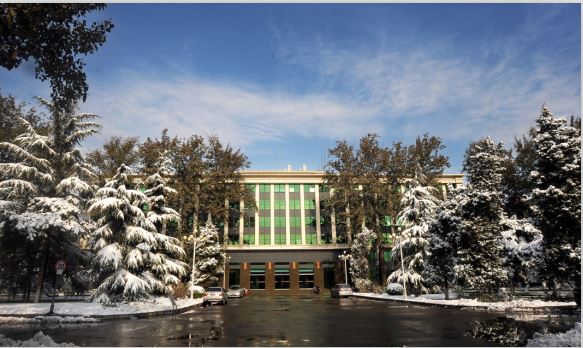 |
| IHEP Main Building (Image by IHEP) |
the Institute of Modern Physics, was founded in 1950, later renamed the Institute of Physics and then the Institute of Atomic Energy, before IHEP was established from Division One of the Institute of Atomic Energy. IHEP is a comprehensive research base for particle and astroparticle physics, accelerator physics and technology, radiation technologies and applications, as well as for nuclear analytical techniques and interdisciplinary research.
IHEP currently has a staff of about 1400, of whom roughly 1100 people are research and technical personnel (about 80% of the total), 150 are management personnel, and the rest are supporting and logistic services personnel. We have 18 scientists holding positions in major international scientific organizations and academic journals.
The IHEP Yuquan Road Campus covers an area of 315,000 square meters, and encompasses a number of experimental halls, laboratories, office buildings, a library and various other supporting facilities. A new campus with an area of 600,000 square meters is under construction in Dongguan, Guangdong Province, as the site for the China Spallation Neutron Source.
IHEP manages a number of China’s major scientific facilities, including the Beijing Electron Positron Collider (BEPC), the Beijing 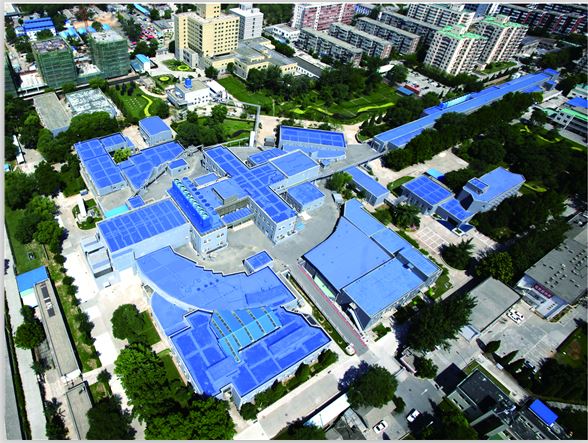 |
| A Bird’s View of BEPCII in 2009 (Image by IHEP) |
Spectrometer (BES), the Beijing Synchrotron Radiation Facility (BSRF), the International Cosmic-Ray Observatory at Yangbajing in Tibet, the Daya Bay Reactor Neutrino Experiment, the China Spallation Neutron Source, the Hard X-ray Modulation Telescope (HXMT), and the Accelerator-driven Sub-critical System (ADS) as well as the Jiangmen Underground Neutrino Observatory (JUNO). In addition, there are several laboratories and research centres which are partially or fully supported by the institute itself, three CAS key laboratories directly supported by the CAS, and two laboratories supported by the city of Beijing.
Since the first successful e+e- collisions at the Beijing Electron Positron Collider (BEPC) in October 1988, IHEP has become established as one of the world’s major High Energy Physics (HEP) laboratories. Several important physics results were obtained with BEPC by the Beijing Spectrometer (BES) collaboration, such as the precision measurement of the τ lepton mass, direct and model-independent measurement of the Ds meson decay constant, precision measurement of the resonance parameters of the J/ψ, and precision measurements of hadron cross-sections (R values) for electron-positron annihilations in the 2-5 GeV energy region.
In July 2009, the major upgrade of BEPC (BEPCII) passed the State Acceptance Test and was put into operation, with an initial luminosity 30 times greater than BEPC, and 4 times more than CESRc in the same energy region. In recent years, the luminosity of BEPCII has been continuously improved to an unprecedented level, allowing the BESIII Collaboration to obtain a number of very important new results, such as the discovery of charged charmonium Zc (3900) and the first observation of many new light hadrons.
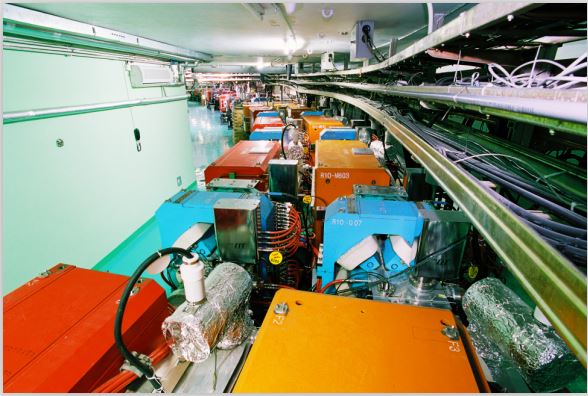
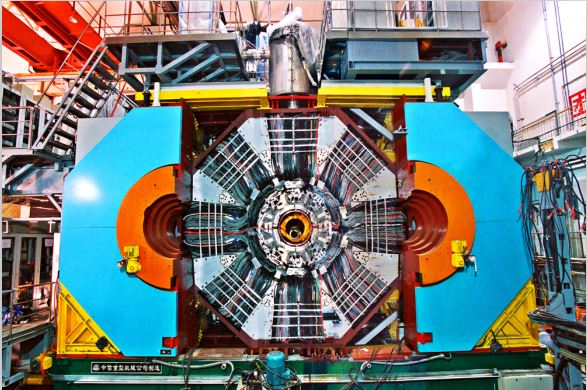
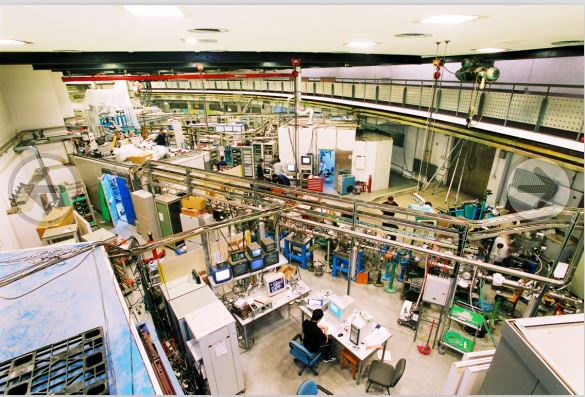
BEPCII BESIII BSRF
IHEP also makes full use of its advanced accelerator and analytical nuclear facilities to enable studies in other fields of science, including condensed-matter physics, chemistry, life sciences, materials science, nano-science and environmental science. The BSRF has 5 insertion devices and 14 beamlines with experimental stations. Its research fields cover physics, chemistry, biology, environment and medicine, allowing about 300-400 experiments to be carried out each year by nearly 100 national research institutions. The BSRF is also used for interesting studies in the fields of protein crystallography, nano-materials, X-ray phase contrast imaging and experimental techniques. With this facility, a number of high-profile results have been obtained, including the protein structure of SARS, the structure of protein complexes in the light-harvesting membranes of spinach and other higher-order plants, and the mechanism of arsenic treatment for leukemia.
IHEP has actively pursued non-accelerator-based particle and astroparticle physics research. The Daya Bay Reactor Neutrino Experiment 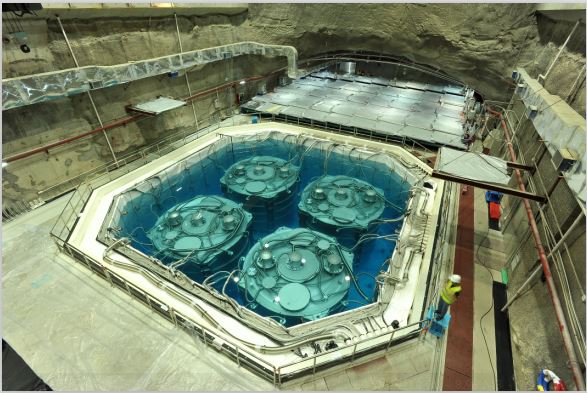 |
| Daya Bay Reactor Neutrino Experiment (Image by IHEP) |
was proposed in 2003, started construction in 2007 and went into operation in late 2011. In March 2012, the discovery of a new type of neutrino oscillation was announced with a precise measurement of the unknown neutrino mixing parameter θ13. This is a very significant result and was selected as one of the top ten Breakthroughs of the Year 2012 by Science.
Another internationally renowned experiment is the cosmic-ray observatory at Yangbajing, Tibet, at an altitude of 4,300 meters above sea level. There are two large air shower arrays: the Sino-Japanese ASγ experiment, commissioned in 1990, and the Sino-Italian ARGO-YBJ experiment, started in 2001.
IHEP is also engaged in space-borne experiments. Examples include a γ-ray burst detector on board the Shenzhou II test flight of the Chinese manned space program, and an X-ray spectrometer for the Chinese moon exploration program. The Hard X-ray Modulation Telescope (HXMT), which was officially approved in 2010, is the first dedicated space science satellite in China, and will be launched in 2015.
IHEP is also expanding its user facilities from X-rays to neutrons. A new facility, the China Spallation Neutron Source (CSNS), is now under construction in Dongguan, Guangdong Province, and will be one of the world's four spallation neutron sources.


YBJ Cosmic Ray Observatory CSNS Under Construction
Over the years, IHEP has developed wide and strong cooperative ties with the international high energy physics community. The US is one of China’s most important and longstanding international partners in high energy physics, with collaboration between IHEP and US institutions going back over thirty years. Collaborative efforts have been concentrated on major projects such as the BEPC and BEPCII, the BES collaboration and the Daya Bay Reactor Neutrino Experiment.
IHEP also has a long history of extensive cooperation with the European and Asian high energy physics communities, including CERN, 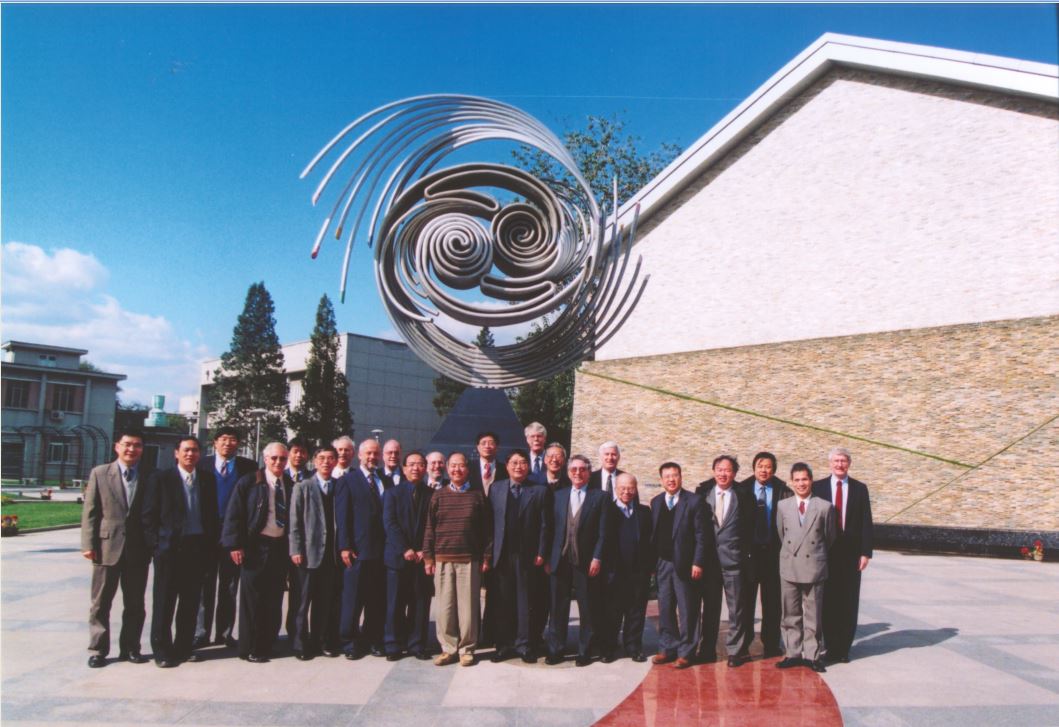 |
| Members of the PRC/U.S. Joint Committee on High Energy Physics in front of the sculpture Rationale of Nature (Image by IHEP) |
INFN, DESY, CNRS, RAL, KEK and PLS. IHEP hosts the BESIII and Daya Bay Collaborations with the participation of hundreds of scientists from dozens of countries, and also hosts the Sino-Japanese and the Sino-Italian Cosmic Ray Collaborations in Tibet. IHEP also takes part in major experiment collaborations at other labs, including AMS, ATLAS, BELLE & BELLE II, CMS, EXFEL, ILC and PANDA.
IHEP is authorized to confer Masters and Ph.D. degrees in theoretical physics, particle and nuclear physics, condensed matter physics, optics, inorganic chemistry, nuclear technology and applications, and applied computer technology. In fact, China’s first Ph.D. degree was conferred by IHEP in 1982. IHEP is among the first institutions authorized to oversee post-doctoral research in physics and nuclear science and technology, with the first post-doctoral researcher trained at IHEP in 1984. There are currently over 470 postgraduate students and 50 post-docs working at IHEP.
Contact information:
Institute of High Energy Physics, Chinese Academy of Sciences
Website: http://english.ihep.cas.cn/
Mailing address: 19B Yuquan Lu, Shijingshan District, Beijing, 100049
FAX: 86-10-88233374 TEL: 86-10-88233093











